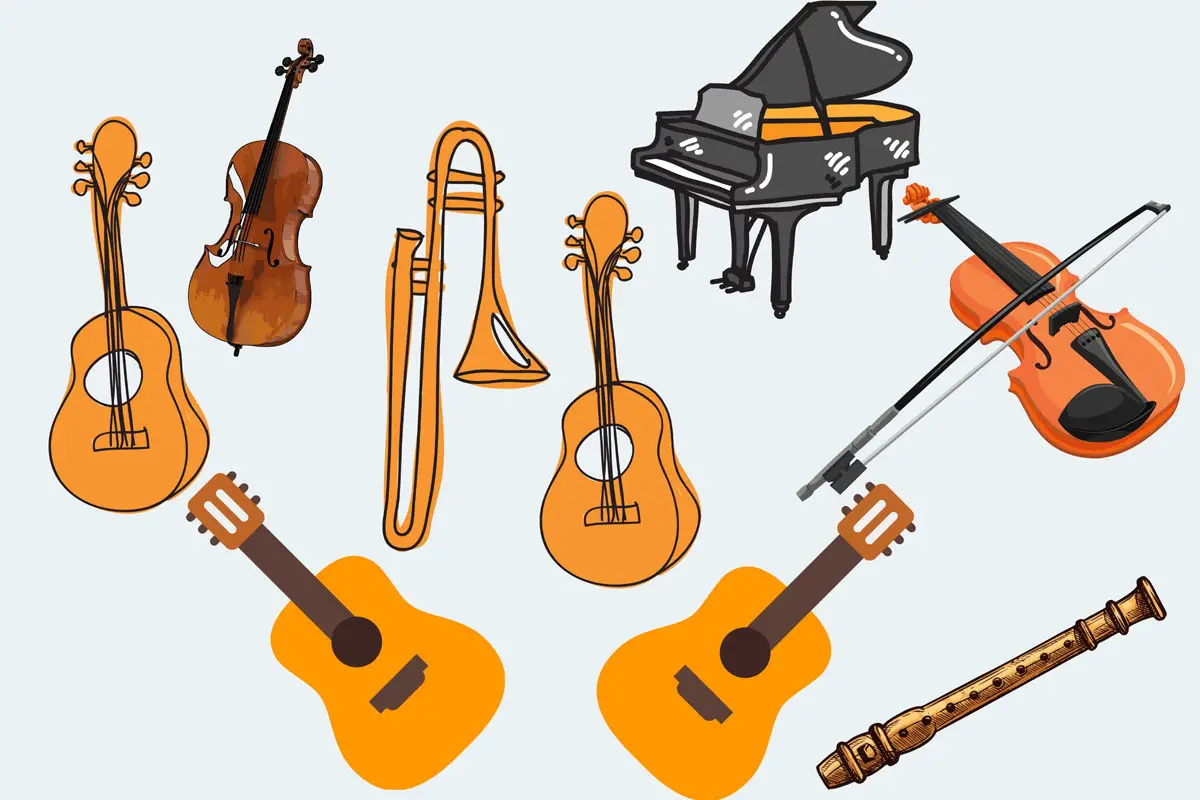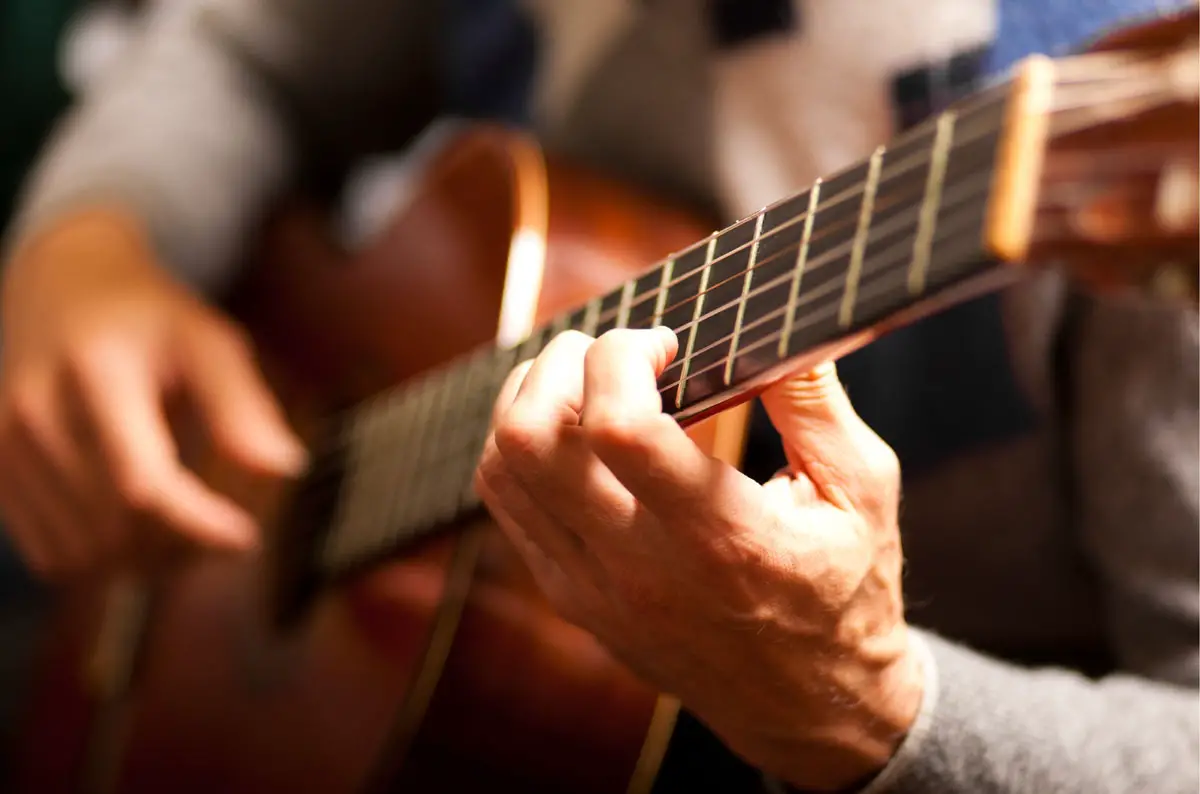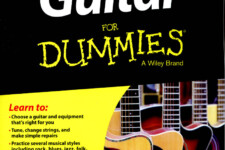Is Guitar In Concert Pitch? | Can You Transpose On Guitar?
Guitar Is one of the world’s most popular instruments, and you might have many questions about it when first starting out. Let’s take a look at what the guitar has in common with other instruments in regards to keys and transposing.
Guitar fits into the group of instruments that play in the key of C along with others like the piano, violin, piccolo, or the flute. Most concert string instruments also fit into the category of being a C instrument such as the viola, cello, and the harp.
Why is guitar classified as a C instrument?
You might at first think guitar is an E instrument since there are two E strings on a guitar, and then there’s the question of transposing – and what that actually means?
- In this article we will take a deeper look at why a guitar is a C instrument, whether it is in concert pitch, and if you can transpose music on it.
- We will break this down into sections so you can build your knowledge in a logical order.

We already stated that the guitar is in fact a C tuned instrument, but in order to understand what that means we need to take a closer look at what it means for an instrument to be tuned in the Key of C.
To start with, let’s discuss what a key means in musical terms.
What Are Keys in Music?
A key is “a system of functionally related chords deriving from the major and minor scales, with a central note called the tonic (or keynote)”.
Some keys are said to be closely related when they share many of the same scale notes, or distant if most or all notes from the two keys are not related.
There are 12 major and 12 minor keys, and the chords formed from triads of notes in each key have their own distinct tonal quality that our human ears can readily hear.
A key features a main (or tonic) note that the chords in that key are built from. Major and minor keys feature triads of notes in specific intervals that form chords with particular tonal qualities.
Each note in the scale has a defined pitch, which simply means the frequency of the sound waves that each particular note makes.
To sum it up in basic form:
- Each key has a tonic note that is a different pitch to the tonic note of other keys.
- Chords in a key are constructed from triads of notes in a defined sequence, and are built from the tonic note of that key.
- Each chord in a single key will have a different tonal quality to the other chords in that same key.

What Are C Instruments?
Now that we have a basic idea what a key is, we can now look at the key of C.
Different instruments come in different tunings, so when the player of a C tuned instrument sees and plays a C note on the staff it will sound different to a player of a non C tuned instrument reading and playing a C on music notation written for their instrument.
If you have different instruments all playing in the key of C, then they will all share the same pitch since they are all playing the same notes and triads (chords) of the scale.
Why Guitar Is In The ‘C’ Group Of Instruments
When players in an orchestra or concert band play together they must have a standard agreed pitch, and in western music this evolved to be the A note above middle C at a frequency of 440Hz (the C note in the center of our musical range).
When you read a C note on music notation and play it on guitar it will sound the same (have the same pitch) as a piano player reading and playing a C from their music notation.
This means both instruments have the same pitch, and the sound of the two instruments will harmonize since the sound from each instrument is producing the same frequency sound waves.
- So now we know that a guitar is a C instrument, since its pitch is tuned to the same frequency as other instruments tuned to C.
- Also, the notes written on music notation for guitar correspond to the notes on music notation (the staff or stave) for other C tuned instruments.
Is Guitar A Concert Pitch Instrument?
In order to define whether the guitar is a concert pitch instrument, we first need to explore and understand what exactly ‘concert pitch’ means.
Did You Know?
Pitch Measurements did not become scientifically accurate until the 19th century due to the work of German physicist Johann Scheibler.
The original term used for pitch was cycles per second (CPS) and was renamed the hertz (Hz) in the 20th century after the German physicist Heinrich Hertz.
What Does Concert Pitch Mean?
Throughout history the pitch that orchestras were tuned to changed frequently, and there was no agreed universal pitch.
Throughout history, the pitch kept increasing for various reasons, and mainly due to singers complaining over the ages that this was straining their voices it was finally proposed in the 1900’s to have a standardised pitch.
In 1939, an international conference recommended that the A above middle C be tuned to 440 Hz, now known as concert pitch.
Did you Know?
There is still no one exact pitch used today for orchestra. However 440Hz is the internationally agreed on pitch for A above middle C.
Now we can determine that the key of C is in relation to the key of A, and all instruments that produce this sound frequency when reading the same note in musical notation are tuned at the same pitch.
Given that the A string of a guitar is tuned to 440Hz as a standard tuning, this makes the guitar a C tuned instrument, as it is tuned to the same pitch as other instruments tuned to 440Hz.
This means by definition that guitar can be classified as being a concert pitch instrument.
Is Guitar a Concert Instrument?
Concert instruments are in the four groups of bowed strings, woodwind, brass, and percussion.
Although the guitar is tuned at concert pitch and is played alongside orchestras from time-to-time, it is not recognized as a concert instrument.
What Is A Transposing Instrument?
To answer the question of whether a guitar is a transposing instrument, we need to first understand what transposing means in musical terms so that we can define if guitar fits in this category.
If you have an instrument that is not tuned to concert pitch, then the music notation must be transposed so that that instrument plays at the same pitch as the other instruments.
Therefore instruments of this type are transposing instruments.
What Does Transposing Mean?
The word ‘transpose’ means to cause two or more things to change place with each other.
In musical terms transposing means we will change the key (pitch) of an instrument.
Why Do You Need To Transpose Music?
Music may be transposed for a few different reasons:
- When two instruments are tuned in different keys such as an alto saxophone tuned to Bb and a piano which is tuned to C, and they want to play a piece of music together.
- When a singer sings a song in a particular key, and the instruments need to match this key.
- Sometimes a song may sound better to the musicians in a different key to the one written.
- A song written for other instruments may be played more easily in another key on guitar.
Is Guitar A Transposing Instrument?
Although guitar is tuned to concert pitch, it is classified as a transposing instrument.
This is due to the fact that a guitar played at concert pitch sounds one octave (8 notes) lower than other instruments playing at concert pitch.
Another way to say this is that guitar sounds one octave below written pitch.
How Can You Transpose On Guitar?
You can transpose on a guitar via a few methods. This is a lengthy discussion, but briefly…
Two of the easiest way to transpose on guitar are to:
- Use a capo – This means you can retain the same fingering as another key played in the open position.
- Move up the fretboard – Play the music further up the fretboard and keep the same note intervals.
Conclusion
To wrap up everything we have discussed, we can now state a few facts about the guitar and exactly why these facts are true.
Through this discussion we discussed concepts that build on each other, moving through the meaning of keys, what concert pitch is, what transposing means, and what classifications the guitar falls under.
Researching and understanding the various factors we can now state the following about guitar:
- Guitar plays at the same pitch as other instruments when playing written music. Concert pitch is internationally agreed to be 440Hz which is A above middle C.
- An A-string on guitar is tuned to 440Hz and sounds one octave lower than written music when played, therefore it is a transposing concert pitch instrument.



